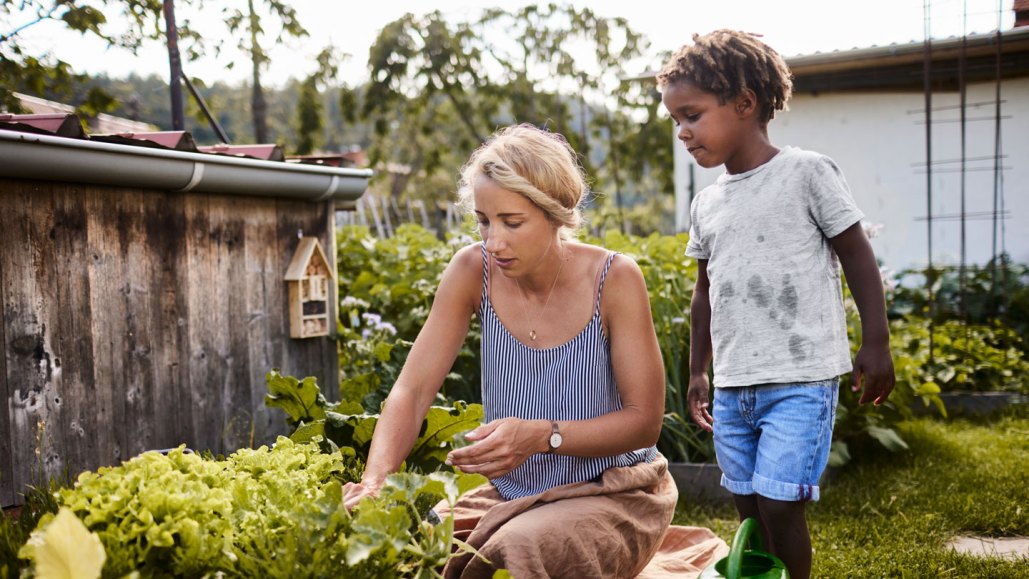Can Scientists Enhance Climate Resilience in Fruits and Vegetables?

In 2023, a new type of apple made its commercial debut at a trade show in Berlin. The Tutti is crisp, juicy, and has that perfect blush—a beautiful cultivar that took decades to produce. But it has a bigger claim to fame: It’s engineered to thrive in temperatures as high as 40° Celsius (104° Fahrenheit).
The apple is a product of the Hot Climate Partnership, a collaboration between researchers and industry groups in Spain and New Zealand to create crops that can thrive in increasingly warm climates. The group joined forces in 2002 amid increasingly hot summers in the Catalan region of Spain that left apples grown there burnt and mushy. After more than 20 years of breeding for heat tolerance, the Tutti (whose research name is HOT84A1) was unveiled. Now, Tutti is grown far beyond the United States, Chile and China, joining a growing list of fruits and vegetables that researchers are trying to climate-proof as the Earth warms. Using tools ranging from the old-fashioned—crossbreeding, reviving native plants, heat-aware planting techniques—to the new, like genetic editing, researchers are trying to keep plant breeders and home gardeners one step ahead of a changing planet.
It’s a monumental task. What felt warm 20 years ago is now commonplace, says Joan Bonany, a pomologist at the Institute for Agricultural Research and Technology outside Barcelona who co-founded the Hot Climate Partnership. Memories of walking comfortably among his neat rows of apple and pear trees “stretch back in time,” he says, and anticipating the future “is a lot like shooting at a moving target.”
Science News is collecting questions from readers about how to cope with our planet’s changing climate.
What do you want to know about extreme heat and how it can lead to extreme weather events? In a sense, Bonany says, Tutti is already outdated.
"Temperatures above 40 degrees Celsius, which are increasingly in our future, are going to cause some real problems," says Mario Andrade, a plant geneticist at the University of Maine in Orono and a co-investigator on a project to create climate-resilient potatoes.
To hit that moving target, scientists are starting with what they know about how plants tolerate heat.
Research has shown that even a small increase in temperatures during the growing season can significantly weaken the yields of many plants. Globally, for example, every 1 degree Celsius results in a 10 percent and 6.4 percent loss in yields of rice and wheat, respectively — foods that, along with corn, account for the largest share of the world's food calories.
But that's just one of many things that can go wrong when temperatures rise. Other signs of heat stress that you may see a lot in your own garden plants include wilting, slower growth, signs of scorching on leaves and stems, smaller fruits and vegetables, or plants that flower but never produce a crop—a sign that their heat-sensitive pollen has been damaged. Some plants even sound their distress calls by making tiny ultrasonic clicks when they’re particularly thirsty (SN: 3/30/23).
As temperatures continue to rise, essential plant function-enhancing proteins, such as those that control photosynthesis, transport water and nutrients, and ward off disease, begin to unfold and break down, says Owen Atkin, a botanist at the National University of Australia in Canberra who is developing heat-resistant wheat. Plants can repair this damage with rapidly acting heat-shock proteins. And above 50° C (122° F), plants begin to change the chemical composition of their cell membranes to keep their lipids from melting like butter left on the counter. But they do so at a price. “The cost of surviving while you’re trying to fix, fix, fix, because the degradation is happening faster, means you’re spending a lot more energy on surviving,” Atkin says. “We need some breakthrough work to protect ourselves from that kind of damage.” Most new plant species today are still being created the way they have been for thousands of years, through a process known as selective breeding, in which parents with desirable traits are crossed and their offspring are thinned out over successive generations until only the hardiest ones remain. It’s a long process, and there aren’t many ways to shorten it — “A plant grows as fast as a plant grows,” Andrade says — but there are new ways to make the process more efficient.




